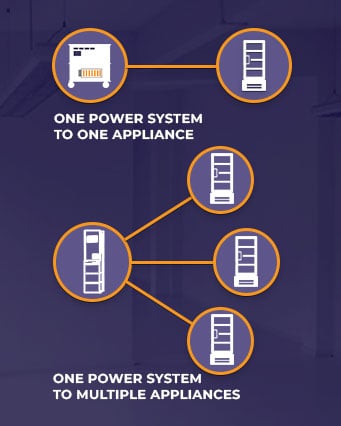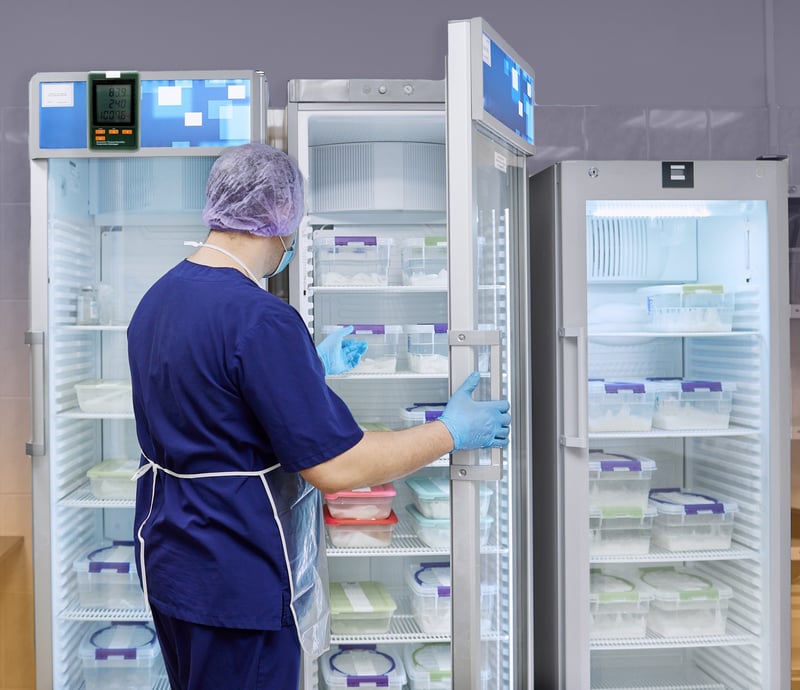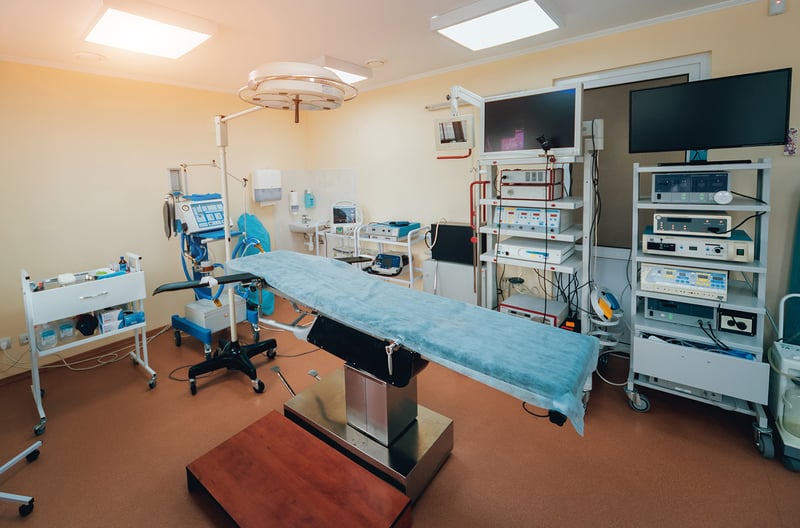We would like to hear from you
Contact Us!
Our sales and technical support staff are available 8-5 EST, Mon-Fri
What’s even better than making sure one key appliance has backup power? Ensuring that all of your most important appliances have emergency backup power.
Having instant and reliable backup power for all your critical appliances is a huge advantage. It allows doctors and staff to focus on urgent tasks and better manage their responsibilities when the power goes out.
So, it’s common for clients with many appliances to ask how many—small or large—they can power with one battery backup generator.
The benefits are apparent.
Having just one system might seem like a great way to save:
But that’s not always the case.
And just because you have 8 A/C outlets doesn’t mean you can plug in and power 8 appliances simultaneously.
The number of appliances your system can handle depends on your inverter's total power (in watts).

An inverter changes the DC power from batteries into AC power that your appliances can use. The amount of energy an inverter can provide is measured in watts. Each appliance also needs a certain number of watts to run.
An inverter can only deliver as much power as it is rated for. It might not work properly if you try to use more power than the inverter can handle. This could cause the system to shut down and stop providing power during an outage.
So, it’s not just about having extra A/C outlets. If you add more appliances, your system might not be able to handle the additional load. That’s why each Medi-Products system is carefully designed to meet your needs, ensuring enough power for your original appliances.
The number of appliances that can be powered with a singular system will vary based upon the individual needs of every client.
As discussed in greater detail in another learning center post—What Determines the Cost of Battery Backup—the same factors that determine cost also determine how many appliances backup generator can power.
These include:
It depends on what you're using to decide how many appliances a battery backup generator can power. Specialized equipment like ultra-low-temperature freezers needs a lot of power, while smaller surgical tools need much less.

Standard refrigerators or freezers typically run their compressors only 30% of the time, meaning they use power for about 7.2 hours a day. In contrast, ultra-low temperature freezers run their compressors more than 80% of the time, drawing power for over 19 hours daily.
Even though these appliances don’t run constantly, their startup power needs are often double their normal running wattage. Because each Medi-Products system is custom-built, it might not have extra power capacity for additional appliances during an outage.
If you need more backup power, you have three main options:
Each option has its own benefits. Often, the second and third options are more cost-effective and practical. Medi-Products generators are designed to fit in tight spaces, so having two in one room is manageable if space is a concern.

When providing emergency backup power for an operating room, it's common to power multiple appliances at once. Smaller appliances like lights, monitors, and surgical tools don’t use much of the inverter’s capacity because they draw power in short bursts and are very efficient.
For example, a modestly sized backup system can easily handle the power needs of various lights and small tools due to their low and intermittent power draw. Larger appliances, like a surgery table, can also be powered by the same system because they’re used briefly, often in moments when other, more power-hungry equipment is off. This means the backup system efficiently manages power and doesn’t drain the batteries quickly.
This helps to dispel a common myth that you need an exceptionally large backup power system to handle many appliances. Instead, we calculate your power needs based on realistic use and add a little extra to ensure you’re covered. This approach ensures you only pay for the power you need, with extra capacity available for extreme situations.
The standalone and Mobile unit product lines are outfitted with 4 and 8 separate AC wall outlet inputs, respectively. These are found on the sides of the standalone unit and the front face of the mobile. All available AC outlets are grounded, 3-prong varieties.
The available number of outlets does not reflect the number of appliances every unit can power. As mentioned above, that is figured out when sizing a system. The available outlets only represent the number of appliances that could be powered if the system were properly sized.

|
Note: Hardwired units do not have built-in AC outlets. Hardwired units integrate directly into a building’s electrical circuits. Once wired, they supply power directly to targeted outlets |
Should you feel you need outlets available, please inform your sales representative at the time of sale. They will be able to determine whether a more custom solution may be available to you.
Every system built fits directly with the need of every customer both in power and form factor. The quickest way to find a perfect system for you is to contact MediProducts directly.
To speak to our product experts, engineers, and sales teams about quoting a system and adding an alarm system, contact us via:
 |
1.800.765.3237 |
 |
sales@mediproducts.net |
Our sales and technical support staff are available 8-5 EST, Mon-Fri